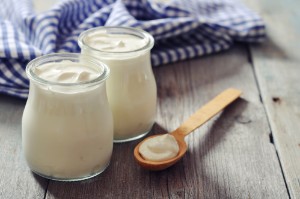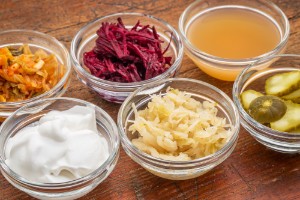How to choose healthy natural yogurt in the store – 7 rules and brand overview
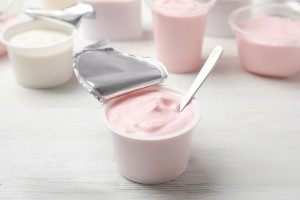 Yogurt is almost always positioned as a fermented milk product useful for the body.
Yogurt is almost always positioned as a fermented milk product useful for the body.
However, not all yogurts are equally healthy. Often, store-bought options contain a lot of sugar, dyes, flavors and other additives. In addition, the product can be subjected to heat treatment, which destroys all beneficial microorganisms.
In the selection process, many important points should be taken into account: from the banal integrity of the packaging to the qualitative and quantitative composition, the presence of lactobacillus flora.
Below we will find out which yogurt can be considered the most useful, as well as give 7 tips on how to choose natural yogurt on store shelves.
8 selection recommendations
The label is the most important step in choosing a fermented milk product. With it, you can learn about all the components that make up yogurt, as well as indirectly judge the presence of beneficial bacteria.
1. We study additives
 Most fermented milk products on the domestic market contain a lot of secondary substances: dyes, preservatives, stabilizers, flavorings, etc.
Most fermented milk products on the domestic market contain a lot of secondary substances: dyes, preservatives, stabilizers, flavorings, etc.
Ideally, there should be no additives in the yogurt at all. But there are harmless additives, you do not need to worry about the presence of which in the composition.
Safe Additives
Harmless additives are considered:
- E1412 or E1414 - modified starch. It is a natural thickener.
- E410 - carob gum. Natural stabilizer, safe.
- E440 - pectins. They are obtained from citrus fruits, apples or beets.
- Food grade Gelatin is a completely useless supplement that is incapable of causing harm.
- Agar-agar is an extremely useful gelatinous substance obtained from seaweed.
- E120 is an allergenic but safe dye for most people.
- E331 - sodium citrate. It is a regulator of acidity. At the moment, scientists have not been able to prove either the beneficial or negative qualities of this substance.
- E415 - xanthan gum. According to its chemical structure, it is a natural polysaccharide. It is approved for use in a number of developing countries due to the lack of evidence of toxicity.
Dangerous additives
Now let's focus on the supplements that you need to give up. They can cause harm to the body:
- E412 - guar gum. It is not completely absorbed in the lumen of the gastrointestinal tract. It is capable (in high doses) of disrupting processes assimilation of nutrients and the balance of microflora.
- E160a is a chemical dye that gives a yellow color to yogurt. It usually has a chemical origin, which is caused by the high cost of a natural analogue. In high doses, it is a carcinogen.
- E160c is a toxic dye, banned in most modern countries.
- E300 - citric acid. In small doses, it does not harm the human body. In high concentrations, it can have a toxic, carcinogenic effect, cause bleeding.
2. We are studying the composition
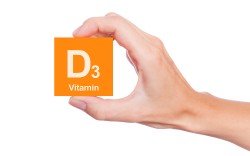 Each yogurt contains a list of nutrients with energy value.
Each yogurt contains a list of nutrients with energy value.
You should pay attention to the calorie content, the amount of carbohydrates, fats and protein.
Ideally, the vitamin D and calcium content should also be indicated on the package.
3. Look at the sugar content
 Sugar is one of the main reasons for turning "healthy" yogurt into "unhealthy".
Sugar is one of the main reasons for turning "healthy" yogurt into "unhealthy".
The average consumption of sugar-containing products is steadily increasing, which provokes the development of a wide range of diseases associated with metabolic syndrome (obesity, type II diabetes mellitus, hypertension, etc.).
According to scientists , the consumption of large amounts of light carbohydrates is directly related to the development of obesity, type II diabetes mellitus, coronary heart disease, dystrophic diseases from the side kidneys and liver .
Normally, a standard serving of yogurt (about 180 ml) should not contain more than 9 g of sugar. Manufacturers, to enhance the taste of their product, can add more carbohydrates, which will lead to a high energy value of the dessert.
In addition, in a sweet environment, the vital activity of beneficial bacteria can be inhibited, for the presence of which natural types of yoghurts are usually appreciated.
Unfortunately, the label does not always separate the amount of added sugar and natural sugar, so it is difficult to determine the specific content of added sugar.
4. We determine the fat content
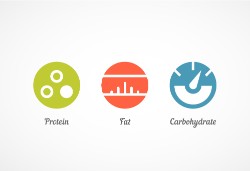 Any yogurt can be made from whole or skimmed milk.
Any yogurt can be made from whole or skimmed milk.
Modern medicine recommends consuming fermented milk products and drinks in which the fat content is minimal. This is due to the high prevalence of obesity and cardiovascular diseases among the world's population.
However, manufacturers are going for a little trick. Low-fat yogurts do not stand out among competitors in terms of taste. To make yogurt more delicious, manufacturers add more sugar. As a result, an attractive label can hide even more harm to the body. This feature is extremely important to consider when choosing.
If yogurt has a high percentage of fat content, it is necessary to normalize its consumption, no more. Not a single major scientific study couldn't prove the harm of high saturated fat content in fermented dairy products in relation to the cardiovascular or endocrine systems. Individual works even revealed benefits.
Milk fats contain conjugated linoleic acid, which is important for the functioning of the cardiovascular, immune, digestive and nervous systems . This substance, according to research, reduces the risk of fatal cardiovascular diseases, reduces the concentration of glucose in the blood, prevents the appearance of cancer cells, and slows down the processes of natural aging.
5. We check for live bacteria
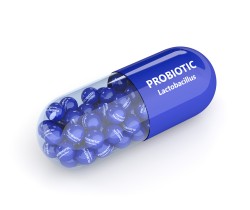 Yogurt is a dairy product that is obtained as a result of the combined fermentation of lactobacilli (Lactobacillus Bulgaricus) and thermophilic streptococcus (Streptococcus thermophilus). It is this feature that distinguishes yogurt from all other fermented milk products.
Yogurt is a dairy product that is obtained as a result of the combined fermentation of lactobacilli (Lactobacillus Bulgaricus) and thermophilic streptococcus (Streptococcus thermophilus). It is this feature that distinguishes yogurt from all other fermented milk products.
If the product contains other types of bacteria, then it can no longer be called yogurt and have all its inherent beneficial properties. The minimum number of representatives of the bacterial flora should not be less than 1*10 7 CFU in 1 gram.
Probiotics, which are part of yogurt, have a large set of useful properties in relation to the human body. They contribute to the maintenance of normal microflora and inhibition of the vital activity of pathogenic and opportunistic microorganisms. As a result, conditions are created that prevent the development of a large number of infectious and inflammatory diseases that occur with intestinal damage.
Also in healthy intestines any nutrients received from food are absorbed faster and better, dyspeptic disorders caused by enzymatic insufficiency are less common , motor disorders and other causes (nausea, bloating, stool disorders such as constipation or diarrhea, spastic pain, etc.).
Proven that a favorable bacterial background leads to an increase in local and general immunity factors , has a positive effect on the body's resistance to any infectious agents.
Dutch scientists have discovered that beneficial bacteria contribute to reducing lactose intolerance, a pathological condition in which the body does not produce enough lactase, an enzyme that breaks down lactose.
Experiments revealed that probiotics contribute to reducing the severity of depression and other mental disorders.
The key rule that will indicate the presence of microorganisms in the product is not a very long shelf life (less than 21 days) and the absence of heat treatment. Pasteurization will destroy all useful stamps anyway.
6. We check the expiration date
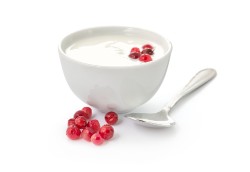 Since ancient times, it has been believed that the shelf life of any dairy products cannot exceed 7 days. However, modern technologies for the production and manufacture of packaging materials allow you to extend the storage time of the product to 21 days.
Since ancient times, it has been believed that the shelf life of any dairy products cannot exceed 7 days. However, modern technologies for the production and manufacture of packaging materials allow you to extend the storage time of the product to 21 days.
If the consumption time is higher than these values, the product contains preservatives and, most likely, there are no useful bacterial cultures (due to heat treatment).
The ideal storage temperature is in the range from -1 to +10 degrees. Going beyond these values is a clear sign of the lack of useful substances and the presence of chemical additives that can be dangerous to the human body.
7. We check the integrity of the package
 When choosing yogurt, it is important to pay attention to the integrity of the packaging. There should be absolutely no defects indicating the depressurization of the container. Otherwise, the product may be extremely dangerous to health.
When choosing yogurt, it is important to pay attention to the integrity of the packaging. There should be absolutely no defects indicating the depressurization of the container. Otherwise, the product may be extremely dangerous to health.
For example, pathogenic bacteria (staphylococci) can enter through a hole in the package, which will begin to actively multiply and accumulate their toxins. Consumption of such a product after 30 minutes will lead to the development of food poisoning and disability for several days.
If the yogurt packaging is metal, then there should be no dents at all. Deformed metal releases toxic substances into the product.
8. We are looking for the label &171;organic&187; on the package (optional)
 Only those yogurts can be considered organic, the milk for the preparation of which was obtained from cows that consumed natural feed without the addition of genetically modified products, antibacterial drugs and hormonal substances (for example, growth hormone).
Only those yogurts can be considered organic, the milk for the preparation of which was obtained from cows that consumed natural feed without the addition of genetically modified products, antibacterial drugs and hormonal substances (for example, growth hormone).
Pastures for such animals are not treated with pesticides and other chemicals that can penetrate into milk and lead to various disorders in the human body.
Research demonstrates that organic foods contain more iron, vitamin E, beta-carotene and fatty acids, which makes them more beneficial. However, the results are contradictory, since the type of carpet nutrition was not taken into account. Therefore, they cannot be considered convincing.
What types are there?
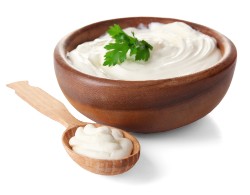 Conditionally, all types of yogurt can be divided into the following types:
Conditionally, all types of yogurt can be divided into the following types:
- Regular milk yogurt;
- Greek yogurt;
- Non-dairy yogurt.
Greek yogurt is currently gaining wide popularity. It is not drinkable and is characterized by high density, as it is devoid of whey and lactose. As a result, the product contains almost 2 times more protein, and 1.5-2 times less carbohydrates.
Greek yogurt is a valuable nutritious product, which, moreover, can be consumed by people with severe lactose intolerance. The negative point is low calcium and a significant number of calories (since the amount of fat increases proportionally).
Non–dairy yogurt is made on the basis of soy and coconuts. The feedstock is of vegetable origin, therefore, contains significantly less fat and is devoid of lactose. It is an ideal choice for vegetarians. There is practically no calcium and vitamin D in such a product, but manufacturers can artificially add them.
The most useful brands
Unfortunately, only a small part of the dairy market can boast of high-quality goods.
Below we have compiled a small quality rating from several brands of yoghurts found on store shelves in Russia and of high quality.
- "Valio". The yogurt of this company has recently received the highest marks at international competitions. It contains a lot of protein and beneficial bacteria. There are no artificial additives in it, but, often, there are pieces of fruit. The high starch content gives the yoghurts of this brand a floury (thick) appearance.
- "Activia". This trademark has been studied by many studies. Has been proven that yogurt contains a high content of bacteria that remain active even in the rectum. However, in some types, the manufacturer adds more sugar and milk protein, which is stated in the composition.
- "B.Y. Alexandrov". All products of this brand contain sorbic acid, but its content is within the limits of normative values (according to GOST). The concentration of protein structures and lactobacilli is within the normal range. The only disadvantage of this manufacturer is the extremely high cost compared to competitors.
Conclusion
Thus, choosing a really high–quality natural yogurt is a very difficult task. Before buying, it is necessary to take into account a large number of factors, each of which can fatally affect the benefits of the product and even cause harm to the body.
